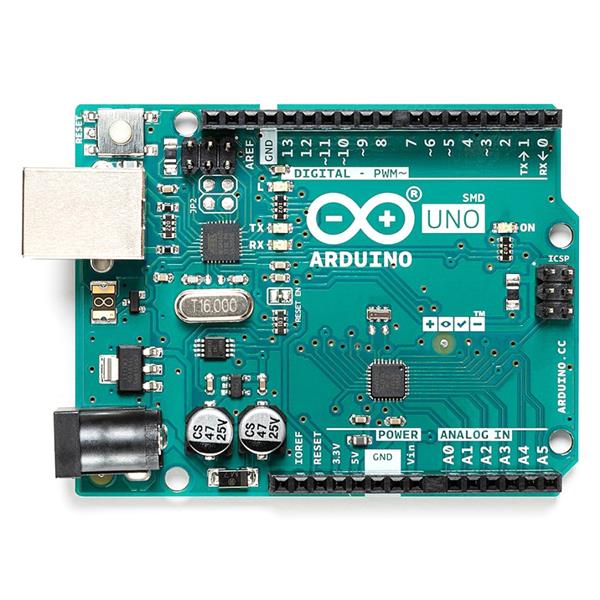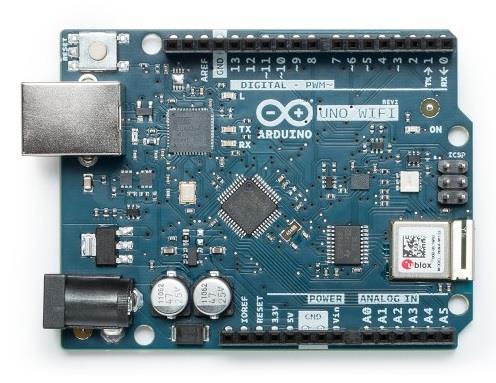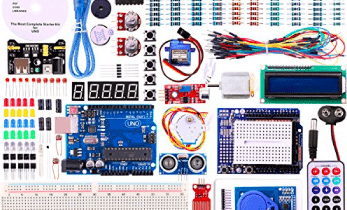The Arduino Uno R4 WiFi: What were they hiding?
When the Arduino Uno R4 was announced, we knew it would be a big upgrade, but there were a few things we didn't know - namely, what's under the yellow patch on the image?

Well, now that the Uno R4 WiFi and Minima are available to purchase, we know! It was a 12 x 8 LED matrix, and a Qwiic/Stemma QT connector! We cover the new release in this week's Electromaker Show:
Add this to the already much-improved specs the 32-bit Renesas RA4M1 MCU brings and it adds up to an incredible upgrade for the OG Maker board!
More Performance With Identical Compatibility
The UNO R4 WiFi and Minima maintain the beloved UNO form factor, ensuring compatibility with existing shields and projects. This seamless transition from the previous generation, the UNO R3, allows makers to upgrade effortlessly without worrying about compatibility issues. For simplicity, I'll just refer to the new boards as the Uno R4, unless there's a specific feature the Wi-Fi variant brings to the table.
Underneath its familiar exterior lies a powerhouse of innovation. The UNO R4 boasts expanded memory and a faster clock speed, enabling more precise calculations and effortless handling of complex projects. Whether you're a beginner working on your first project or an experienced maker pushing the boundaries, this microcontroller has the performance to meet your needs.
A Plethora of On-board Peripherals
To further extend the possibilities, the UNO R4 introduces a range of onboard peripherals. These include a 12-bit DAC, CAN BUS, and OP AMP, opening up a world of expanded capabilities and design flexibility. With these peripherals at your disposal, you can explore new avenues in your projects and take your creativity to new heights.
The UNO R4 takes care of power management with its extended 24 V tolerance. This feature allows seamless integration with motors, LED strips, and other actuators, simplifying your power supply setup. No need for multiple power sources - just plug in and let the UNO R4 WiFi handle the rest.
Adding to its versatility, the UNO R4 supports HID (Human Interface Device) functionality. When connected to a computer via USB, it can simulate a mouse or keyboard. This feature proves invaluable when sending keystrokes or mouse movements, making it an ideal choice for a wide range of applications.
The Power of Wireless Connectivity
While the Uno R4 Minima is an incredible upgrade, one of the standout features of the UNO R4 WiFi is its integration of the ESP32-S3 module from Espressif, providing built-in Wi-Fi and Bluetooth capabilities. With this wireless connectivity, makers can take their projects to the next level, expanding the reach and control of their creations. By harnessing the power of the Arduino IoT Cloud, makers can now monitor and control their projects remotely, opening up endless possibilities for home automation, remote sensing, and much more.
Seamless Integration with the Qwiic/STEMMA QT Ecosystem
Arduino understands the importance of collaboration and ease of use. That's why the UNO R4 WiFi features a Qwiic I2C connector, allowing effortless connection to nodes from the extensive Qwiic ecosystem. With adapter cables available, compatibility with sensors and actuators based on other connectors is never an issue. This ecosystem of pre-wired and plug-and-play components makes rapid prototyping a breeze, allowing you to focus on unleashing your creativity.
The Biggest Change in Years
This is undoubtedly the biggest single upgrade the Arduino line has seen in some time. While the line of Nano boards available has changed and improved over time, the introduction of the Portenta C33 (the H7's cheaper but still powerful cousin), and now the Uno R4, Arduino is showing that they can pack powerful hardware into affordable boxes while retaining all fo the magic that made Arduino so popular in the first place.
Both Arduino Uno R4 variants are available from Arduino, with the Minima costing €18 and the WiFi costing €25.
































Leave your feedback...